RECOIL OFFGRID Preparation Grid Down Comms
In This Article
In 2025, the simplicity of communication barely registers as a thought. Imagine your ancestors from a century ago learning about the information and communication potential of the phone in your pocket. The idea that global communication could be so effortless would leave them dumbfounded. These capabilities are easy to take for granted — right up until they’re gone.
As long as the cellular infrastructure holds, communication isn’t much of a concern. It remains the easiest and most widely accessible link to the outside world. But anyone who has lived through even a brief outage knows how fast things can go sideways. So, what happens when the usual networks go dark? Few places are safe from natural disasters, and even fewer could avoid the effects of a cyberattack, EMP, or solar flare, all capable of crippling modern communication. A little forethought and planning can make a big difference when the grid goes down.
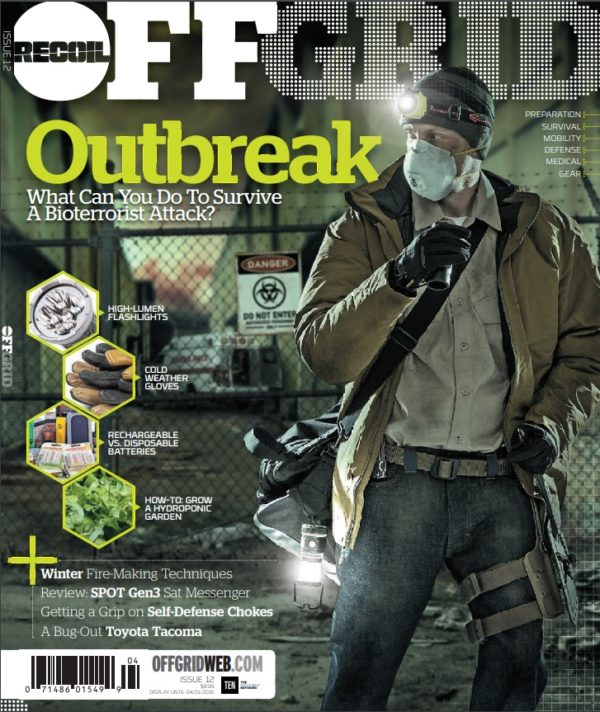
Think about all the ways you communicate in a single day. It’s mind-boggling — family group texts, work emails, social media, even ordering takeout — handled with almost no effort. Now take away your cell phone and landline. Add a disaster to the mix. What’s your plan?
Some basic forms of communication don’t require any technology, whistles, flares, a signaling mirror, or even pen and paper. Low-tech or no-tech methods have clear limitations, but for the sake of this article, let’s move beyond them. Let’s assume you have access to power, even if it’s through alternative sources like solar, wind, a generator, or a battery bank. That opens the door to radio communication.
Anyone familiar with radio comms knows there’s gear to buy, licenses to get, and rules to follow. Radios range from simple line-of-sight walkie-talkies to satellite rigs and everything in between. Generally, the more powerful the system, the more complex the equipment and licensing. That said, it is widely accepted and even stated by the FCC that in a true emergency, the rules no longer apply. If someone’s life or property is in danger, you can use whatever means you have to call for help. Still, it is not always as simple as flipping a switch and getting an immediate response. There are some basics worth knowing and plenty of ways to build comfort and capability before a crisis puts you to the test.
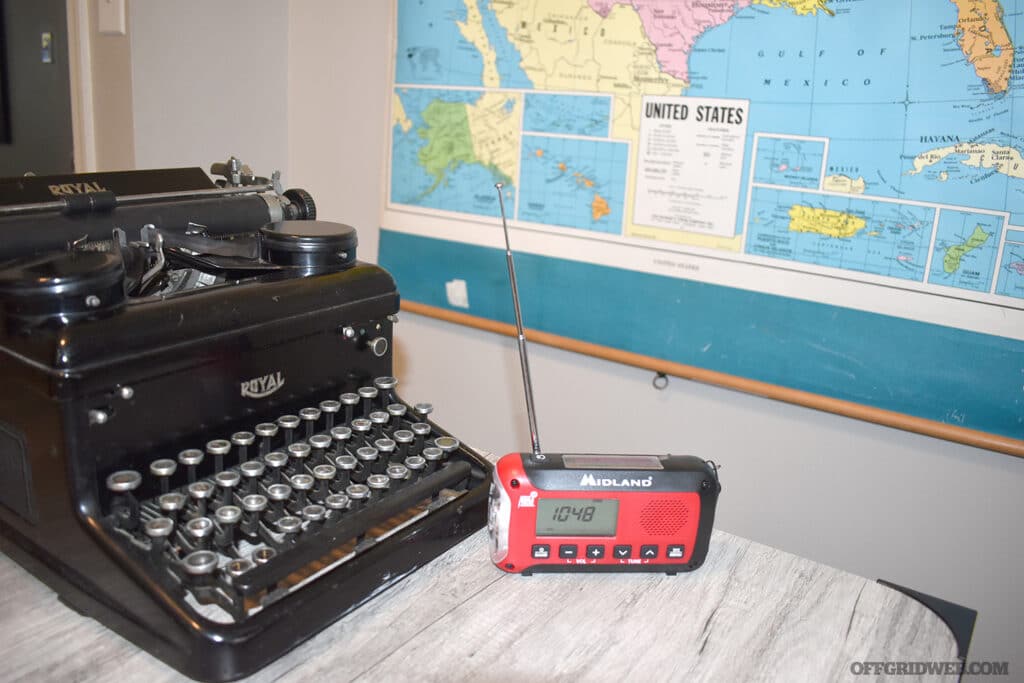
Weather radios, like the Midland ER50, provide critical alerts that go beyond weather. All Hazards alerts include Amber alerts, evacuation notices, and other civil emergencies.
Most people are familiar with weather radios. They’ve been a long-standing staple for disaster preparedness and staying aware of changing conditions. While many run on batteries, most also include solar charging or a hand crank, giving you the ability to stay informed when other communication methods stop working.
The National Oceanic and Atmospheric Administration (NOAA), through the NOAA Weather Radio All Hazards network, uses seven channels to broadcast continuous updates and alerts. These broadcasts are transmitted through more than 1,000 stations across all 50 states and beyond. Many weather radios include Specific Area Message Encoding, which lets you filter alerts to only those affecting your area. Even if you have other communication tools on hand, a reliable weather radio should still be considered essential.

Communities often band together and develop a communications plan using GMRS radios to coordinate notifications and needs.
The phone in your pocket is an unmatched tool for communication and information, as long as it has power and a signal. Lose either and its usefulness drops fast, especially for staying in touch. (We’ll cover the satellite communication options now appearing on some phones later.) Whether the towers are down, you’re outside of coverage, or the network is overloaded, you’ll need alternatives in your communications plan. If you’re not familiar with radio terminology, here are a few options worth knowing and what they actually mean.
Family Radio Service
The first level of two-way communication radios are Family Radio Service (FRS) radios. They’re simple and inexpensive. If you’re picturing your kid’s Spiderman walkie-talkies, you’re thinking of FRS radios. Some models look more tactical and less like toys, but they operate the same way.
A basic push-to-talk button lets you transmit on any of the 22 available channels. Because they have fixed antennas, FRS radios are short range with no real way to boost their reach. They’re mostly line-of-sight and are commonly used around the house, in neighborhoods, at festivals, or during events where organizers need direct communication.
The available channels give you some flexibility, but they use shared frequencies, which can get crowded if many people are transmitting nearby. One major advantage of FRS radios is that they require no license. They have a role in any communications plan as long as you understand their limitations.
Citizens Band
If you’re Gen X or familiar with big trucks, you probably know about a popular low-cost, low-power radio: the Citizens Band (CB) radio. CB radios are the Wild West of communication. Rules exist, but they’re rarely followed. Still, they offer a simple, mobile option for short-range comms and are especially appealing to those who want to avoid licensing.
The beauty of a CB is its simplicity — no network, no data, no text messaging, and no subscription. Just pick a channel and push to talk. Aside from the cost of the radio itself, they’re free to use. The downside is limited range. Depending on terrain and antenna setup, you can expect about three to seven miles. CBs are also known for static and crowded frequencies. While some see them as outdated, their proven reliability in short-range scenarios keeps them relevant.
General Mobile Radio Service
Portable
Mobile
Overlanders, neighborhood response groups, radio hobbyists, and sometimes event staff or small businesses often rely on General Mobile Radio Service (GMRS) radios. While GMRS does require a license, getting one is easy and affordable. There’s no exam, the fee is $35, and the license is good for 10 years. Best of all, it covers your entire family.
GMRS radios are more powerful than FRS, with output up to 50 watts depending on your setup. They can also use repeaters, which significantly extend range. GMRS shares the same 22 channels as FRS, plus eight additional repeater channels. They’re versatile, useful in many situations, and can be surprisingly budget friendly.
It’s worth noting that GMRS is where things start to get a little more involved than just powering on and pressing a button. With more frequencies comes the challenge of finding someone to talk to. From this point forward, it helps to know how your radio works, where to listen, and to have a prearranged plan with others about how and when to make contact.
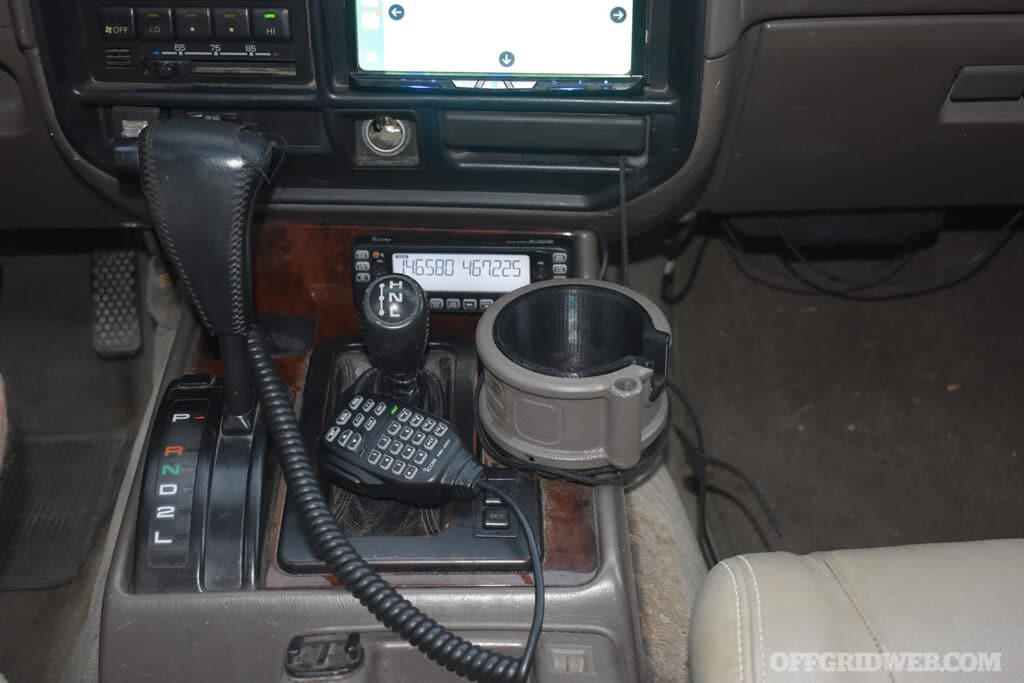
A mobile ham radio can be mounted inside a vehicle and used for short, medium, and long-range communication on the move during a disaster, cyberattack, or other event that cripples common communication methods.
Ham
Portable
Mobile
Base Station
Some call it a hobby, others call it a lifestyle. Amateur radio, or ham radio, is where range, cost, licensing, and technical skill come together. These radios offer a serious upgrade across the board. Historically, ham radios have earned their reputation as a vital method of communication during large-scale disasters. When traditional infrastructure fails, ham operators have stepped in to transmit and receive crucial information.
Ham radios don’t rely on cell towers or the internet. They operate independently, used by individuals who are licensed through the Federal Communications Commission (FCC). That said, there’s a real learning curve. To pass the required exam, users must understand regulations, operating practices, and some electronics. Once licensed, operators can choose from a wide range of radios and antennas to tailor their setup to specific needs. These systems can use repeaters to send and receive signals across vast distances, sometimes even globally.
In a disaster, a ham radio may be your best shot at contacting someone outside your immediate area. The reach is impressive. Even if you don’t transmit, being able to receive information can make a huge difference in a critical situation. And you’re not alone. Once licensed, you can connect with organized groups that focus on emergency radio support. The Amateur Radio Emergency Service (ARES) is made up of volunteers who provide communications before, during, and after incidents, declared or not. Another option is the Radio Amateur Civil Emergency Service (RACES), which can be activated by government officials during a crisis. The key difference is that ARES operates year-round, while RACES is only active during officially declared emergencies.
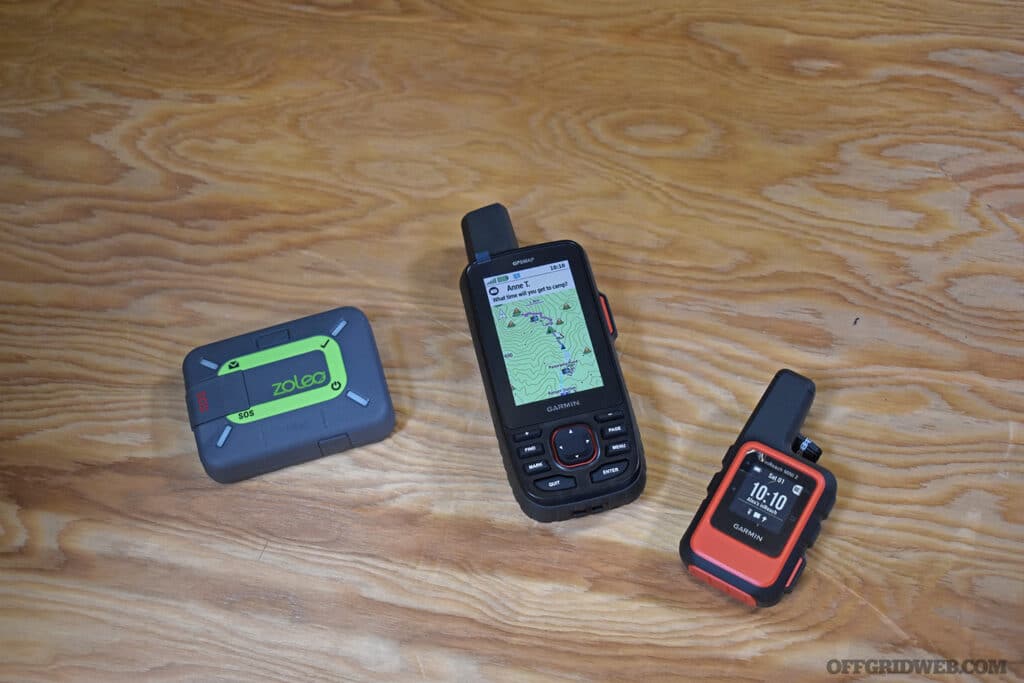
There are several commercially available devices that utilize the Iridium satellite network, which utilizes 66 satellites to offer global coverage for communication, tracking, and SOS purposes.
Once reserved for the military or the ultra-wealthy, satellite communication (satcom) has evolved and is now edging into the mainstream. Those who travel off-grid have used satcom for years. With a subscription, companies like Garmin and ZOLEO offer GPS tracking, two-way messaging, and SOS features. Satellite phones are also widely available, though they tend to be expensive and require ongoing subscriptions. More recently, satcom capabilities have reached consumer smartphones. The iPhone 14 and newer, as well as some newer models of Google Pixel and Samsung Galaxy, now include basic satellite communication features.
A common misconception is that satcom systems work independently of ground infrastructure. In reality, most still rely on terrestrial ground stations to route signals to and from satellites. For example, Starlink operates through a growing network of more than 150 ground stations worldwide, with more in development.
Right now, satellite communication is the most geographically flexible option for those without a ham radio license who still need to reach help, update loved ones, or send critical information. These systems don’t rely on internet or cell service, so damaged or overloaded infrastructure won’t shut them down. Still, satcom signals can be disrupted by buildings, dense vegetation, or heavy cloud cover. Cost, subscription fees, and limited two-way functionality have been long-standing drawbacks, but those barriers are shrinking fast.
One form of communication that’s growing in popularity is the grassroots-style mesh network. A mesh network operates without cell towers or internet access. Instead, devices — or “nodes” — communicate peer-to-peer, passing messages from one device to another. A single transmission can hop across multiple nodes to reach its destination.
Aside from latency issues and the requirement that devices must be powered on to function as nodes, mesh networks have a lot going for them. They’re decentralized and self-healing, meaning if one node drops out, the message simply reroutes through others. Adding more devices doesn’t bog the system down — it actually extends its reach.

Cellular infrastructure has become so ubiquitous in the United States that we are often stunned when it goes down or becomes overwhelmed. Having alternative means of communicating with friends, family, or emergency personnel is one of the most important preps you can make.
A communication plan should be proactive, not reactive. No matter the crisis scenario, your overall preparedness strategy needs to include communication tools beyond just a cell phone and a weather radio. While both are valuable, your toolkit should be broader and more adaptable.
One widely used method for building a solid communication plan comes from the military: the PACE model. PACE stands for Primary, Alternate, Contingency, and Emergency. If you’re unsure where to begin, use this as your framework. Within your own plan, determine what fits into each category and build from there.
Establish Goals

During the midst of a comms-down scenario is not the time to be coming up with a plan. Figure out what you’ll do when times are good, and you’ll have peace of mind when times get bad.
Both GMRS and ham radio licenses are issued by the FCC. If privacy is a priority to you, consider using a P.O. box when registering. Call signs are issued and required when communicating. All call signs are published and searchable on the FCC website, which means anyone who hears your call sign can discover your address.
We’re all tied to a fragile system of devices, towers, and frequencies. When the grid goes down — whether from a natural disaster, man-made event, or cyberattack — the ability to call for help or connect with those nearby can change the outcome. Fortunately, modern technology allows for contingencies. Understanding your options and the equipment involved takes a proactive mindset and a willingness to invest some time. The payoff is simple: staying connected when it matters most.
Don’t miss essential survival insights—sign up for Recoil Offgrid’s free newsletter today!
Check out our other publications on the web: Recoil | Gun Digest | Blade | RecoilTV | RECOILtv (YouTube)
Editor’s Note: This article has been modified from its original version for the web.
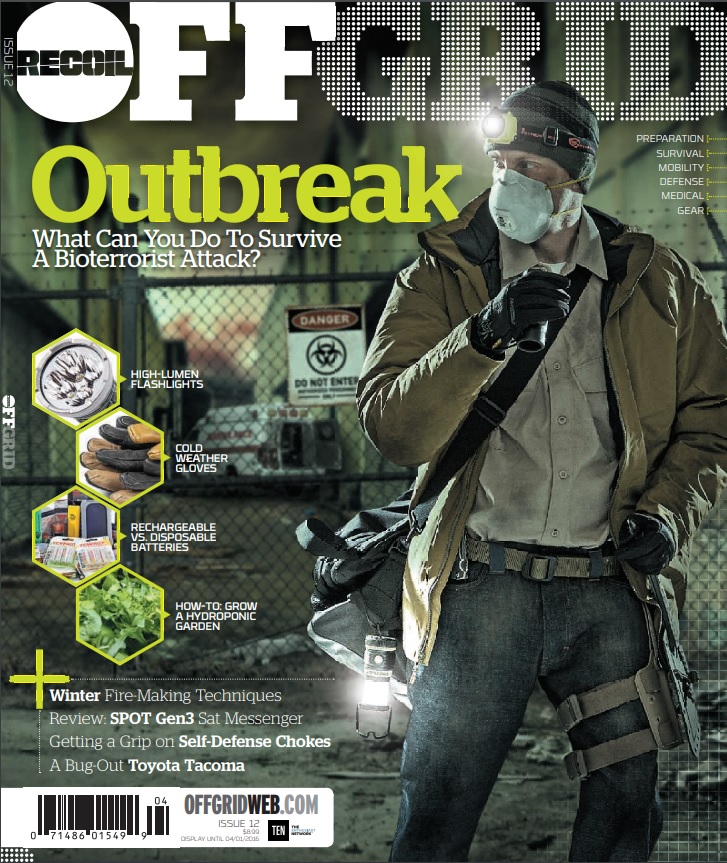 STAY SAFE: Download a Free copy of the OFFGRID Outbreak Issue
STAY SAFE: Download a Free copy of the OFFGRID Outbreak Issue
No Comments